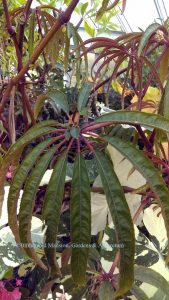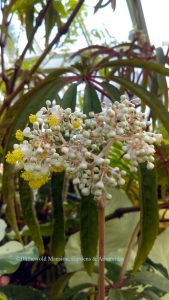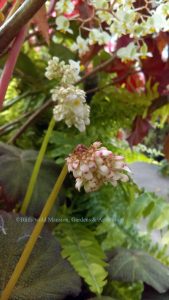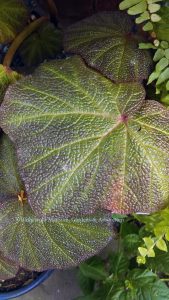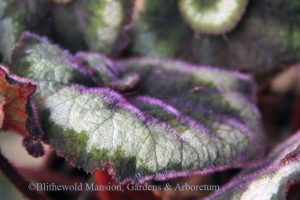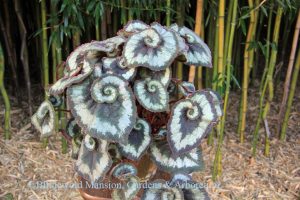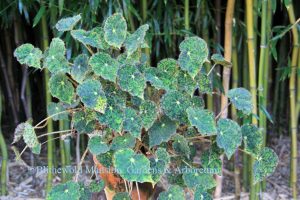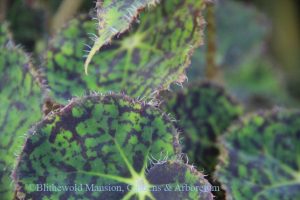Beginning the year with Begonias
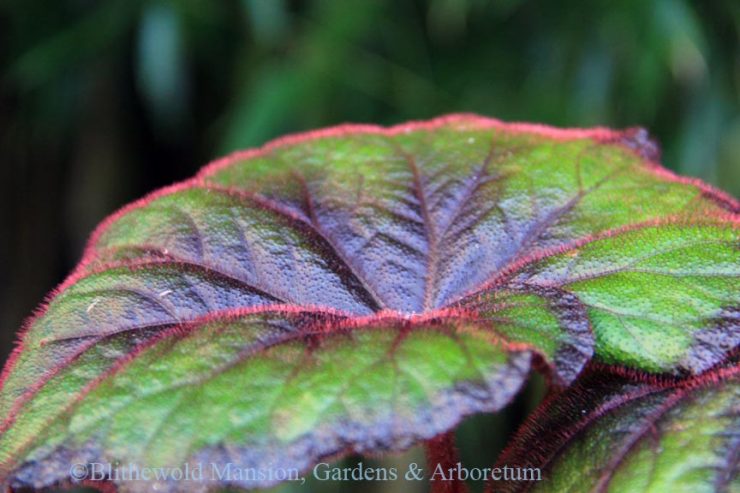
Another year comes to a close this weekend. As Gail, Joe, and I prepare our thoughts for the next year, we seek to re-imagine the gardens in new ways. Before the flurry of January activity, before the planning and ordering begin in earnest, there is a quiet spirit that pervades the greenhouses this last week of December. It is at moments such as this that I begin to notice and evaluate our plant collections. We have amassed quite a nice assortment of begonias here in the greenhouses. If you have not caught begonia-fever yet, I hope you will soon! Begonias are a wonderful plant with many variations sure to please almost any aesthetic. They are categorized in seven informal groups: cane-stemmed, rex-cultorum, rhizomatous, sempervirens, tuberous, winter-flowering, and shrub-like. You may be thinking to yourself at this moment, I had no idea there were so many kinds of begonias! This just goes to show that even one of the most common plants can surprise. I am going to highlight for you just a few of our begonias here in the greenhouses. I hope you will come and see them all for yourself!
I will start with one of my favorites – and one of the most unusual ones – the Palm Leaf Begonia (Begonia luxurians).
- Palm Leaf Begonia
- Palm Leaf Begonia flower
Native to Brazil, this begonia is a member of the informal shrub-like group. Its habit resembles the cane-stemmed group, but with some growth variation (the new growth begins in the middle of the cane, rather than starting from the base of the plant). I love pointing this plant out as a begonia to visitors to our greenhouse because no one ever suspects that is what it is. The leaves are a good 12″ across and the flowers emerge on long stems covered in white buds opening to release their soft fragrance.
The Palm Leaf is not the only begonia flowering in our greenhouse these days. Several of the other plants are beginning to show off as well. Begonia ‘Pigskin’ with its pink-tinged buds is pictured below. This begonia is part of another informal group not listed above – thick stemmed begonias. It is a very small group, which is most likely why it is not included in the regular list. ‘Pigskin’ is named for its leathery leaf. You can almost feel the rough texture in the picture below.
- Pig Skin Begonia flower
- Pig Skin Begonia Leaf
Begonia ‘Anna Feile’ is also in flower right now. This is a cane-stemmed variety with gorgeously undulating red-hued leaves. Its flowers, seen here still in bud, are a beautiful true pink.
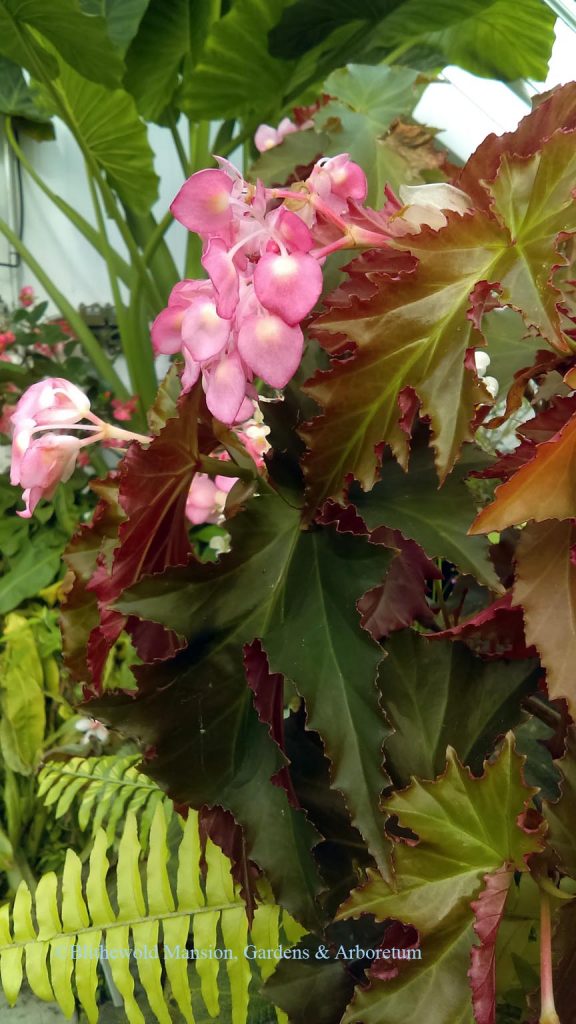
Begonia ‘Anna Feile’
This next begonia is the first plant that captured my attention when I started working here at Blithewold. Begonia ‘Fireflush’ is truly stunning in every aspect. It is generally classified as a rex-type begonia (although there is some argument about that in the Begonia world). Its new shoots are a furry and fiery red that almost appear unreal.
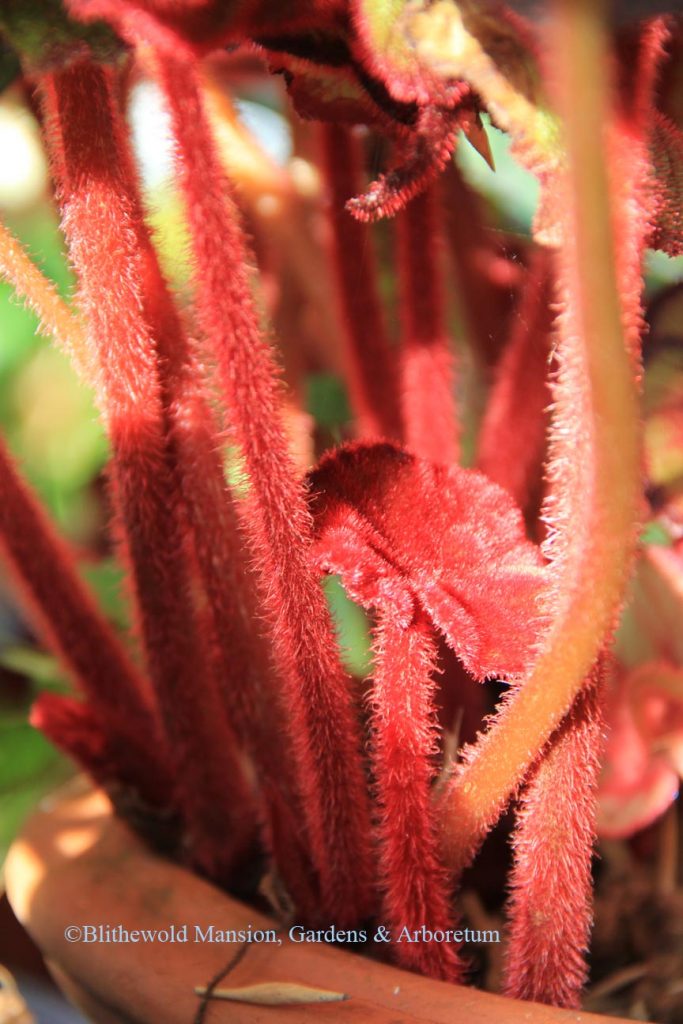
Begonia ‘Fireflush’
Once the leaf matures, the thin red hairs that cover the outside are the only remnants of its blazing beginning. I still find it captivating.
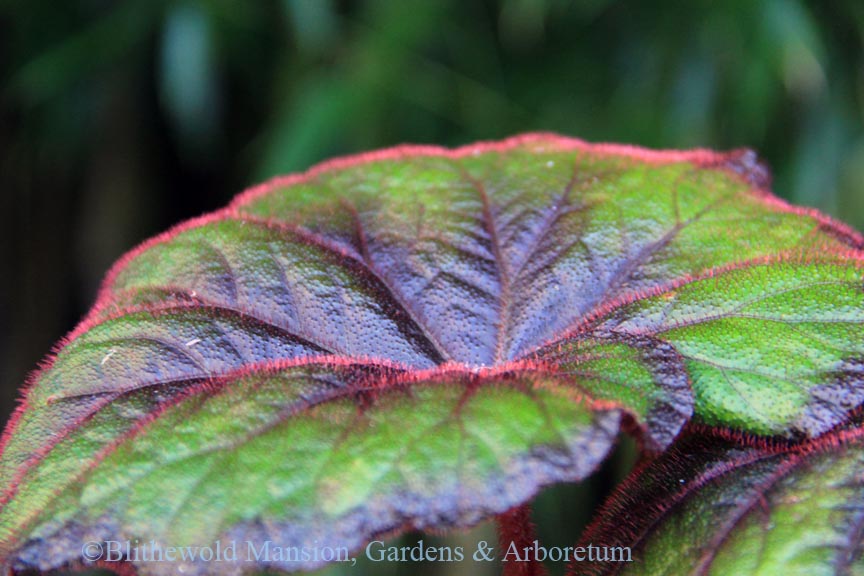
Begonia ‘Fireflush’
Speaking of beautifully-tinged leaves, Begonia ‘Escargot’ has its own wow-factor in leaves covered with fine purple hairs. It also has a beguiling twirl to each leaf that resembles a snail’s shell (and most likely earning it its moniker). I have always been partial to this begonia. The rex type begonias need high humidity in order to thrive, so it does not do well in my apartment, but in the greenhouse it is a wonderful plant all winter long.
- Begonia ‘Escargot’ leaf
- Begonia ‘Escargot’
The final specimen I will mention today is the Eyelash Begonia (Begonia bowerae). This rhizomatous type begonia is actually considered a ground cover in its native Mexico. Here we display it as a stand-alone plant worthy of our attention. It earns its name from the tiny hairs that surround the edges of each leaf like miniature eyelashes. It is a beauty even from a distance with its spotted leaves and demure habit (most plants stand at only six or seven inches tall).
- Begonia ‘Eyelash’
- A close look at Begonia bowerae hairs.
As you can see from this sampling of our begonia collection, there is much to see and wonder at in the greenhouses. Not all Begonias are created equal, and we are all the luckier for it.
Happy New Year!

